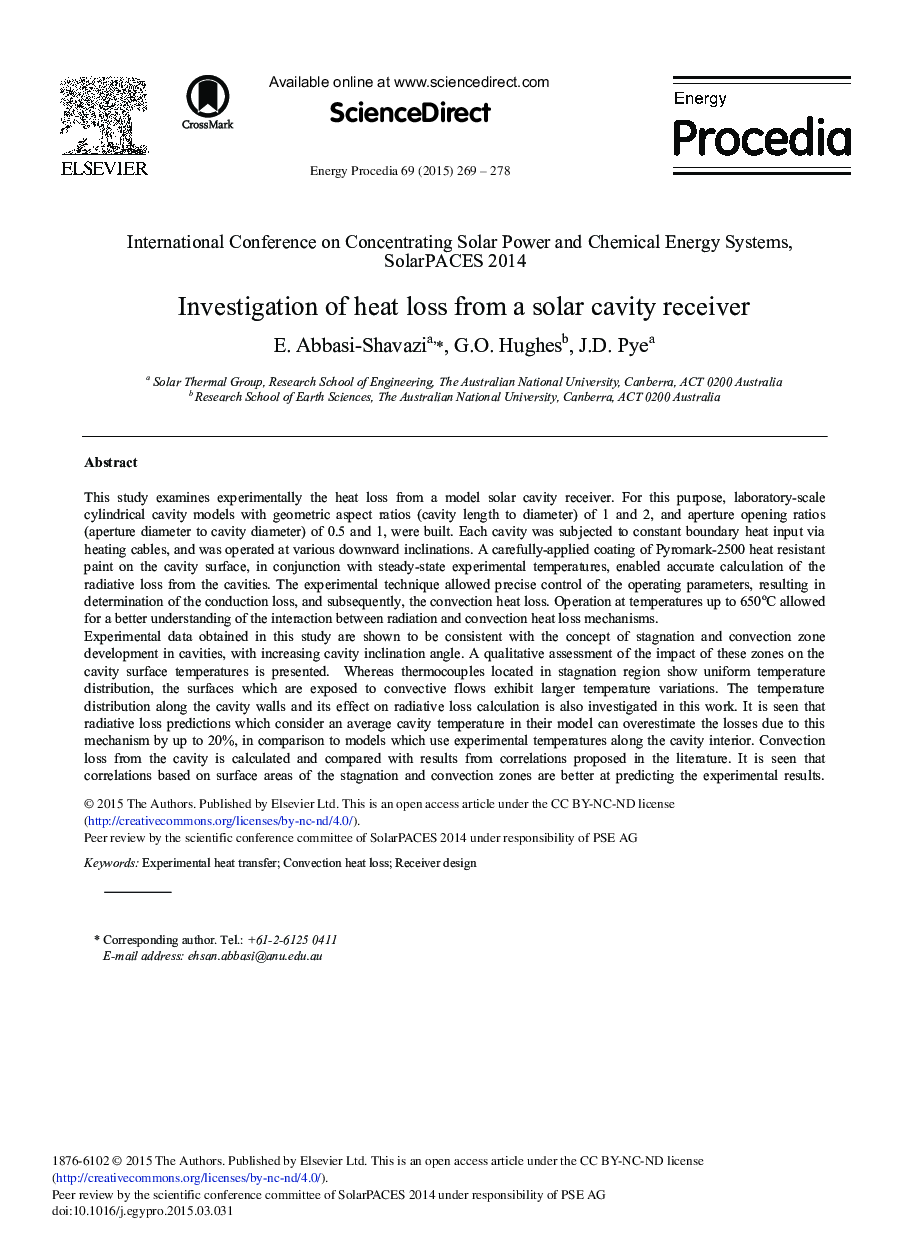| کد مقاله | کد نشریه | سال انتشار | مقاله انگلیسی | نسخه تمام متن |
|---|---|---|---|---|
| 1510196 | 1511166 | 2015 | 10 صفحه PDF | دانلود رایگان |
This study examines experimentally the heat loss from a model solar cavity receiver. For this purpose, laboratory-scale cylindrical cavity models with geometric aspect ratios (cavity length to diameter) of 1 and 2, and aperture opening ratios(aperture diameter to cavity diameter) of 0.5 and 1, were built. Each cavitywas subjected to constant boundary heat inputvia heating cables, and was operated at various downward inclinations. A carefully-applied coating of Pyromark-2500 heat resistant paint on the cavity surface, in conjunction with steady-state experimental temperatures, enabled accurate calculation of the radiative loss from the cavities. The experimental technique allowed precise control of the operating parameters, resulting in determination of the conduction loss, and subsequently, the convection heat loss.Operation at temperatures up to 650oC allowed for a better understanding of the interaction between radiation and convection heat loss mechanisms.Experimental data obtained in this study are shown to be consistent with the concept of stagnation and convection zone development in cavities, with increasing cavity inclination angle. A qualitative assessment of the impact of these zones on the cavity surface temperatures is presented. Whereas thermocouples located in stagnation region show uniform temperature distribution, the surfaces which are exposed to convective flows exhibit larger temperature variations. The temperature distribution along the cavitywalls and its effect on radiative loss calculation is also investigated in this work. It is seen that radiative loss predictions which consider an average cavity temperature in their model can overestimate the losses due to this mechanism by up to 20%, in comparison to models which use experimental temperatures along the cavity interior. Convection loss from the cavity is calculated and compared with results from correlations proposed in the literature.It is seen that correlations based on surface areas of the stagnation and convection zones are better at predicting the experimental results.
Journal: Energy Procedia - Volume 69, May 2015, Pages 269-278
